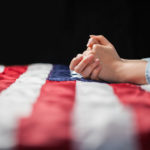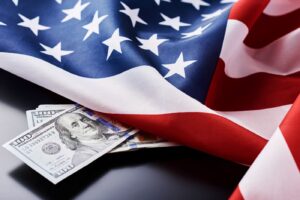An inquisitive elementary school student asked his teacher, “Is it wrong to steal?” The teacher replied, “I don’t know. What do you think?” This incident in a major midwestern public school alarmed thousands of parents, and reminded myriad others why they value religious private schools: these schools are usually guided by a moral compass for academics and behavior that public schools patently do not offer.
I recently conducted a meta-analysis of more than ninety studies on education, and the results suggest that perhaps it is time for America’s leadership and the general public to take a second look at religious private schools. At the risk of immodesty, let me be frank. The study is hugely important because it is the first published meta-analysis to compare the three primary types of American schools: religious private schools, traditional public schools, and charter schools.
A meta-analysis statistically combines all the relevant existing studies on a given subject in order to determine the aggregated results of the research. This meta-analysis yielded results that surprised many by indicating that students from public charter schools did no better than their peers in traditional public schools. In contrast, youth from religious private schools performed better academically than their counterparts in both public charter schools and traditional public schools, even when the results were adjusted to account for socioeconomic status, selectivity, race, and various other factors.
These findings are especially noteworthy when one considers that over the last four or five years, the general public has been enamored by the presence of public charter schools, which has really obscured the consistent vital contributions of faith-based schools, particularly in the inner city.
Start your day with Public Discourse
Sign up and get our daily essays sent straight to your inbox.Other social scientists, most notably James Coleman, made names for themselves by conducting analyses that demonstrated that pupils attending faith-based schools had a scholastic edge over those that did not. But the school climate has changed considerably since these scholars undertook those analyses. The most notable change, especially since the early 1990s, has been the rise of public charter schools.
Public charter schools became more popular in the early 1990s, concurrent with greater consideration of school choice programs that would include religious private schools. Since that time, the debate over which school model works best has become more complex, as educators and politicians have considered the possibility that schools should be allowed to compete more with each other so that they improve across the board.
Perhaps the most notable of these arguments was propounded in 1990 by John Chubb and Terry Moe in their work Politics, Markets, and America’s Schools. They posed a rhetorical question: Why do educators and world leaders admit, almost universally, that the United States has the best system of university education in the world but only a mediocre system of public elementary and secondary schools?
American universities dominate world rankings of universities that have been regularly disseminated out of China, Great Britain, and Germany over the last twenty years. Most of us recognize, for example, that to be able to say one is a graduate of Harvard is almost equivalent to saying that one attended the best university in the world. The only real competition that Harvard, Princeton, and Yale receive for the top slots has generally come from Cambridge and Oxford in England. Equally convincing is the fact that universities such as Columbia, Chicago, MIT, Stanford, Duke, and Dartmouth are usually among the world’s top 6 to 15 universities.
Chubb and Moe argue that American public schools, by contrast, lack good reputations because elementary and secondary schools compete so little with each other. They insist that private schools should be allowed to compete with public schools. Nevertheless, although Presidents George H.W. Bush and Bill Clinton endorsed the idea of competition, they focused nearly all their education reform efforts on establishing and expanding charter schools.
Chubb and Moe warned that these steps alone couldn’t yield the competition level necessary to improve American education.
They argued that private schools need to be included in any choice initiative because, for example, half of America’s National Merit Scholarship winners attend private schools. They averred that including private schools would not only enable myriad American students to attend some of the nation’s finest schools, but would force public schools to improve, after their fall to a complacent state resulting from their decades-old near-monopoly on education. In spite of these warnings, federal and state governments pumped about 2 percent of the education budgets to charter schools.
Today when politicians and educators refer to school choice, they almost always refer to choice in the public arena. Five years ago such a scenario seemed very unlikely, because in his State of the Union address President George W. Bush called for a White House Education Summit that would gather a number of leading education academics in the country to reinvigorate the nation’s policies on non-public education. Bush himself was the keynote speaker, which suggested how important he believed the gathering to be. But despite his determination to incorporate the summit’s recommendations, when he left office the nation all but totally rejected his new emphasis.
With this scenario in mind, the results of the meta-analysis are all the more intriguing. The meta-analysis included ninety studies. The results indicate that attending private religious schools is associated with the highest level of academic achievement among the three school types, even when sophisticated controls are used to adjust for a variety of factors, including socioeconomic status, race, gender, and selectivity.
Examining results from all ninety studies, I found that the average academic outcome for religious school students was .28 of a standard deviation unit higher than for traditional public school (TPS) students, while the average for charter school students was only .01 of a standard deviation unit higher. If one converts these numbers to percentiles, the average academic outcome was 11 percentage points higher than that of TPS pupils, while charter school attendees scored about the same as their TPS counterparts.
Translated into more tangible numbers, students who attend private religious schools attain educational levels that average about twelve months ahead of those attending regular public schools. Even when the meta-analysis employed sophisticated controls, which included measures for socioeconomic status, selectivity, gender, and race, youth who attended faith-based schools achieved at levels seven months ahead of both TPS and public charter school students.
One of the most intriguing results of the study is that the racial and socioeconomic achievement gaps are roughly 25 percent narrower in religious private schools than in public schools. This finding is particularly interesting when one considers that over the years the government has spent hundreds of billions of dollars to bridge the gaps, with only limited success. Higher expectations for students, and school leaders’ insistence that pupils take demanding courses, could help to explain these circumstances in faith-based schools.
The meta-analysis focused primarily on scholastic performance, but it also examined student behavior. The results indicated that youth from faith-based schools maintained even a larger edge in behavior than they did in school academics. That is, pupils from religious private schools exhibited fewer behavioral problems, even when socioeconomic status, selectivity, race, and gender were also controlled for. This translates into fewer gangs, lower levels of drug abuse, and greater racial harmony than one typically finds in public schools.
Many people, even this researcher, expected public charter school students to perform somewhere in between the levels achieved by students attending faith-based schools and those attending traditional public schools, given that they were trying to mimic certain aspects of private religious schools.
To the extent that neither traditional public schools nor charter schools are succeeding on a broad scale, it appears that the best hope for American education is religious private schools. Not only are they considerably more economically efficient, but their students also achieve better academic and behavioral results.
The nation should therefore rethink its strategy of espousing charter schools and overlooking the benefits of faith-based education. It may be time to extend school choice to include the private sector. Because religious schools are so much more efficient than public schools, states would save money by implementing programs that pay for children to attend these schools instead of more expensive public ones. The meta-analysis calls into question the current trajectory of school choice that emphasizes only public school choice, without due diligence in pursuing the inclusion of private religious schools.













